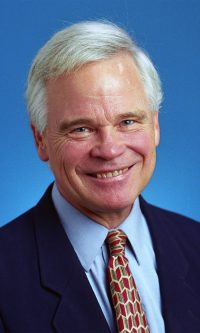DG MARTIN COLUMN: Can’t stop UNC’s move to Raleigh
Too late.
It has already been done.
The Spangler building that served as headquarters of the UNC system is dark and empty for the first time since 1971 when UNC president William Friday moved the university president’s offices from the center of the UNC-Chapel Hill campus to the site just a few blocks down the road.

D.G. Martin
Another empty building is the Franklin Street house that has been the university president’s home since 1907.
The University of North Carolina, now called the UNC system, has moved outside the center of Chapel Hill for the first time since February 1795 when the university’s first student, Hinton James, enrolled.
Now in off-campus transition quarters, the university is on the way to moving to Raleigh as ordered by the General Assembly last year and with a specific deadline of July 1, 2023, in the budget adopted this year.
It is a bad idea.
But there was little objection earlier this year when the university’s Board of Governors, after a short debate, approved a lease for temporary headquarters in Raleigh.
Three important board members did speak against the move. Prominent conservative Art Pope and former legislators Leo Daughtry and John Fraley voted against the move to Raleigh.
Daughtry said, “It is my opinion that the move from here to Raleigh was done purely on the basis of politics.”
As he told NC Policy Watch’s Joe Killian, “The plan to move the UNC System offices to downtown Raleigh is expensive, ill-considered and motivated primarily by politics.”
Killian continued, “Beyond the political implications, Pope and Fraley said, relocating the UNC System office, with its more than 250 employees, is an unnecessary expense when the offices and support systems for the university already exist in Chapel Hill.”
Whatever the reason for the move, the university is moving and it will never be the same.
Upon its move from Chapel Hill to Raleigh, the university becomes another state bureaucratic agency, much more concerned with pleasing state officials and legislators rather than understanding and serving the students, faculty and campus leaders.
Looking back at The University of North Carolina led by Frank Porter Graham, William Friday, Dick Spangler and others, operating at a distance from Raleigh in the campus environment, guided North Carolina’s universities to nationally recognized success.
We will have to adapt to a new reality.
Instead of devoting a portion of time with students and faculty as Graham did with his Sunday evening open houses or Spangler did with his regular lunches at Lenoir Hall, the university president and his or her associates will miss the daily contact with university people.
Instead, they will consort with other state officials in Raleigh, far away from a university campus environment.
How will the university president manage these changed circumstances?
From his experience as a university student, his service on university and community college boards and positions of educational leadership, current UNC President Peter Hans has the background to be an extraordinary president.
He would be even better, I think, if he could have kept his base of operations where the university’s heart and center has been for more than 225 years.
When he recruits higher education leaders to serve in North Carolina, he may be more likely to choose from the state employees who will surround his office after the move to Raleigh.
Away from a campus, he may find it more difficult to become familiar with, understand and recruit new university employees and faculty for the positions that need people with on-site university experience.
It will be harder and harder for the university president to be an inspiring leader rather than simply a high-level state bureaucrat.
D.G. Martin, a lawyer, served as UNC-System’s vice president for public affairs and hosted PBS-NC’s “North Carolina Bookwatch.”

